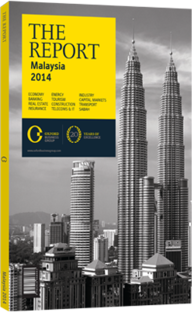OBG talks to Ratan Tata, Chairman Emeritus, Tata Group

Interview: Ratan Tata
What factors are currently driving increased trade between India and Malaysia?
RATAN TATA: While bilateral trade is at an all-time high, owing to geographical proximity as well as strong social and cultural ties, the potential has yet to be fully realised.
Over the last five years Malaysia’s share of India’s total exports has fallen from 1.9% to 1.3%, increasing at a five-year compound annual growth rate (CAGR) of 7%, whereas India’s overall exports (to all countries) have climbed at a five-year CAGR of 12%. Malaysian exports to India have fared better, rising from 3% of total Malaysian exports in 2008 to 3.8% in 2012, and growing at a five-year CAGR of 10%. Core exports have changed little over the years and there is a need to provide impetus to bilateral trade.
Implementation of the Framework Agreement on Comprehensive Economic Cooperation between India and the Association of South-east Asian Nations (ASEAN), and the ASEAN-India Free Trade Agreement could play a key role in boosting bilateral trade.
Besides the recent joint venture between AirAsia and Tata, what other industries offer the greatest potential for Malaysian-Indian partnership?
TATA: Industries with significant potential include information technology, automotives, education, infrastructure, health and pharmaceuticals, and tourism. As a leading sector in India, pursuing joint ventures in technology could benefit both sides, while also allowing Malaysia to gain from shared best practices.
At the same time, as a major manufacturer and exporter of vehicle parts and components, Malaysia has access to large foreign markets, which offers opportunities in shared technology, expertise and engineering capabilities, among other things.
Satellite schools in higher and specialised education could also be a mutually beneficial arrangement, with Indian higher education institutes such as the Indian Institute of Management and the Indian Institute of Technology consistently high-ranked by global publications.
Large projects related to housing and infrastructure development, including airports, power generation, bridges and ports, are other areas of possible collaboration. Likewise, businesses can also work together to develop projects in neighbouring Myanmar, Sri Lanka, Bangladesh and Indonesia, respectively.
In the past, Malaysia has encouraged Indian pharmaceutical companies to set up operations in the country. These businesses could be further encouraged to invest in manufacturing and research. Collaboration, technology-sharing and the development of new intellectual property could be prioritised, in the process attracting government and private research centres and universities in both countries. Moreover, with a population of 1.2bn, India is a key source for the tourist market. AirAsia and Tata can perhaps help grow ancillary hospitality services and industries such as hotels, restaurants and local businesses. Agriculture and food processing, textiles and garments, banking and finance, and biotech are also areas for potential cooperation.
How will air linkages planned by AirAsia and Malaysia Airlines promote greater collaboration between businesses in Malaysia and India?
TATA: Lowering the cost of travel between the two countries could have a positive impact. India could be a large source of tourist numbers for Malaysia and vice versa. India is at present the sixth-largest market for tourist arrivals to Malaysia, though close to 2m people in Malaysia are of Indian origin, which is one of the largest populations in the world. Additionally, lower costs associated with freight, travel and transportation between the two countries can aid the 26m small and medium-sized enterprises present in India. Local businesses from either country can be supported via trade financing and incentivised to expand to overseas markets.
Finally, aviation linkages will facilitate greater movement of labour and talent between the two countries. There are currently around 50,000 Indian workers in Malaysia in both skilled and semi-skilled employment.
You have reached the limit of premium articles you can view for free.
Choose from the options below to purchase print or digital editions of our Reports. You can also purchase a website subscription giving you unlimited access to all of our Reports online for 12 months.
If you have already purchased this Report or have a website subscription, please login to continue.

